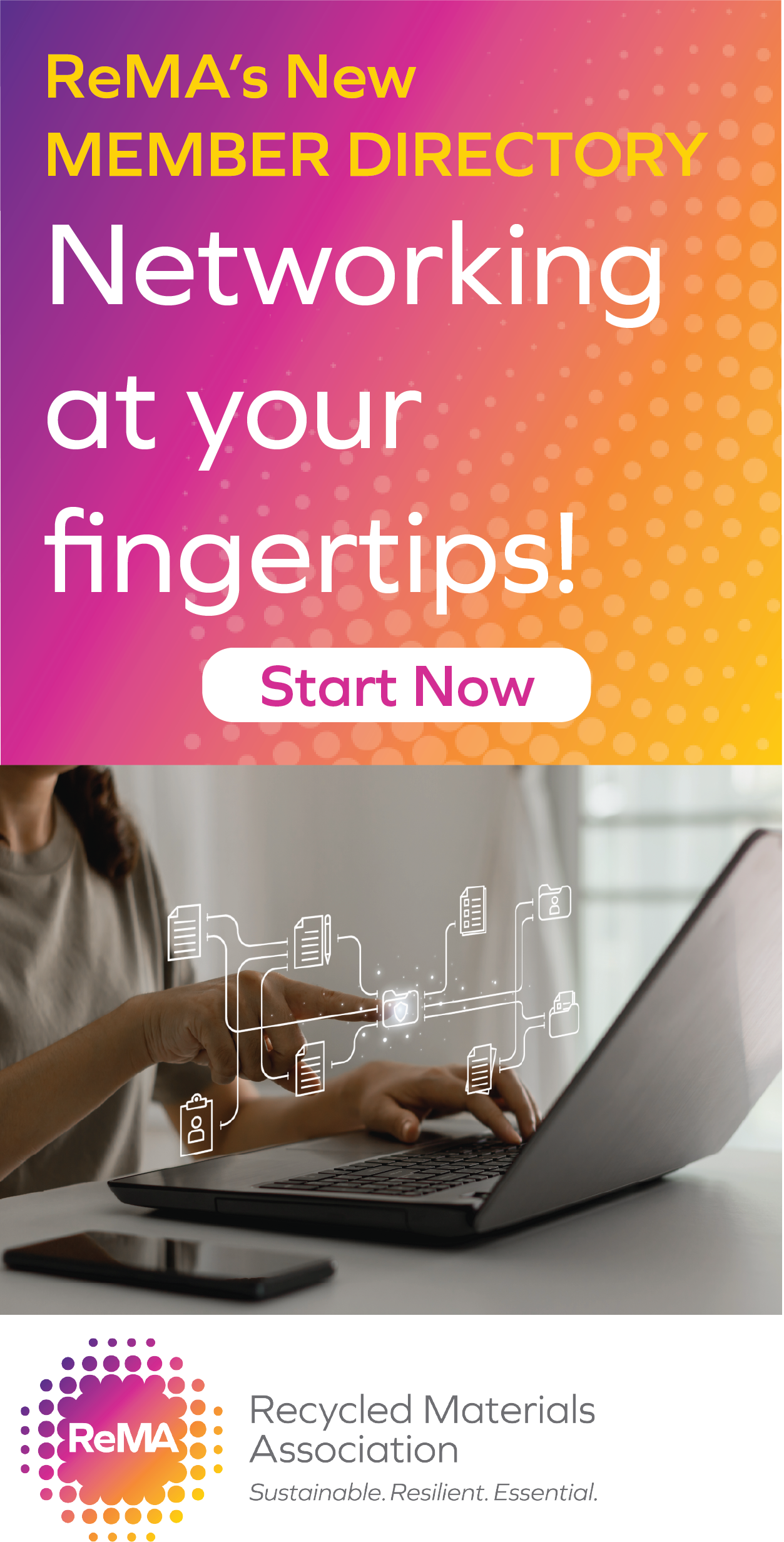As vice president for environmental affairs and industry sustainability at the Consumer Technology Association (CTA), Walter Alcorn is responsible for coordinating and advocating for policy and related issues for the association as they relate to consumer electronics.
As a frequent speaker at ISRI events and other conferences featuring products made with recycled materials, Alcorn is uniquely positioned to comment on how recyclers and manufacturers can find common ground to benefit everyone. Scrap News had the chance to talk to Alcorn in advance of National Manufacturing Week, and he addressed a range of issues of interests to recyclers, manufacturers, and the public.
Scrap News: California recently enacted new legislation to establish an Extended Producer Responsibility (EPR) program for battery-embedded products. CTA worked with retail and recycling industry representatives during the legislative process. Could this collaborative approach work with similar EPR bills in other states?
Alcorn: CTA actively supported the California embedded battery bill. However, the now-law is not a traditional U.S. EPR bill. Rather, it is funded by an advanced recycling fee collected at the point of sale of new products and remitted to the state, which then distributes the funds to recyclers and collectors.

In the electronics recycling industry, California’s program is unique, and there are many questions to sort through and answer during the coming years before the program becomes fully operational in 2028. CTA is always happy to work with retailers, recyclers, and other stakeholders to find workable, common-sense solutions to environmental challenges.
Is the idea of the right-to-repair/recycle getting a boost from recent statements of support for repairability from tech giants like Apple and Samsung? How might the midterm elections affect congressional support for right-to-repair/recycle legislation?
Manufacturers like these are now competing for who can make the most repairable devices, and who can facilitate those repairs in the most efficient and effective manner. CTA expects to see continued growth in the repair business during the coming years. As for congressional movement on repair or related legislation, the recent hearings on repair underscored the divisions and ambiguity across party lines on this topic. Therefore, it is not likely that the outcome of the midterm elections will affect the prospects for such legislation.
What sort of opportunities do you envision for refurbishment/reuse of consumer products for aging or underprivileged people?
Major electronics manufacturers continue to expand their network of authorized repair locations and services—networks that were mostly an afterthought a few years ago but now include thousands of locations across the country. As repair services continue to expand and technologies advance, consumer technology products will continue to become more accessible and affordable to all people.
As the Internet of Things (IoT) evolves, will “smart” products like refrigerators be processed by recyclers without major changes to recycling processes and infrastructure? We talk about Design for Recycling, but who bears ultimate responsibility for that?
CTA continues to watch IoT developments and their impact on recycling and the environment overall. For better or worse, the connectivity associated with the IoT involves very small amounts of material compared with the “thing” itself. With few exceptions, a product that was commonly recycled before it is connected to the internet will be recycled the same way after it becomes an IoT product, and the inverse is true for products that are or were not commonly recycled. An IoT refrigerator is still basically a refrigerator. Where complications may arise is in products whose material composition is mainly non-electronic (e.g., textiles) but to date most IoT devices currently on the market already use electricity.
What do you think is the outlook over the next few years for greater collaborations between manufacturers and recyclers to ensure that products become truly circular?
As more responsibility is pushed onto producers throughout the lifecycle of a product, the distance between manufacturers, repair providers, and recyclers will decrease. We see increased collaboration with ISRI and its members in the future, and CTA is happy to provide opportunities for business interactions between all our members at CTA’s CES 2023 in Las Vegas.
Photo courtesy of CTA.










